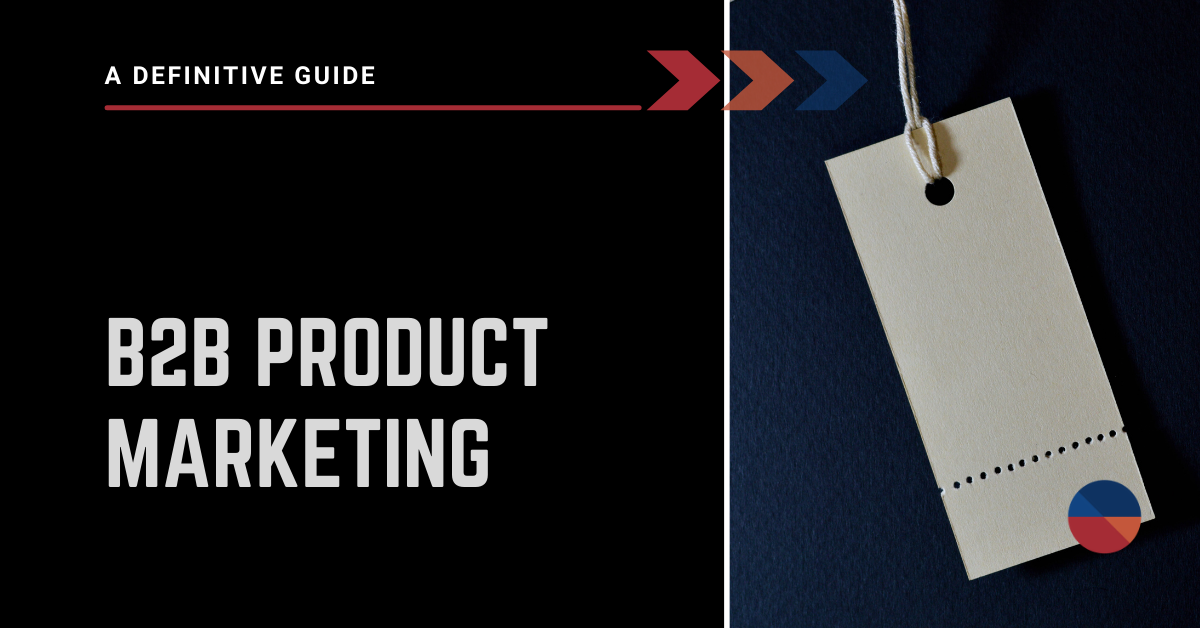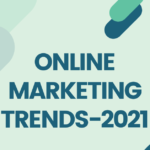A Definitive B2B Product Marketing Guide
Experts estimate that the global advertising market will be valued at over $769 billion by 2024.
There are certain approaches that are common to all kinds of advertising and marketing. However, to truly succeed in marketing, you need to hone your approach to suit your particular area.
Business-to-business (B2B) product marketing requires you to adopt certain specific ideas and practices. Using these to specialize in the area will maximize the returns you get from your marketing exploits.
Let’s start with the definition first and dig deeper into the essentials of Product Marketing.
What Is B2B Product Marketing?
There are many different kinds of marketing, with different approaches to suit different target markets. However, one of the most fundamental differences when it comes to the type of buyers is that between an end consumer and a business.
Generally, consumers do not put as much thought into purchases as corporate buyers. Many consumers are prone to impulse buying, which is something that product marketers take into account when they execute their strategies.
Because corporate customers only buy products that they think will make them money, they are far more difficult to attract with simple psychological hooks. B2B product marketers need to focus at all times on the value their product adds, and how this will translate to increased sales for their clients.
Product marketing relies on different competencies and approaches than the marketing of a service. Generally, visual depictions of the product in action will take center-stage a lot of the time, as leads are far more likely to make a purchase if they can see the product working.
Table of Contents
The Goals & Responsibilities of B2B Product Marketing
Like any other type of marketing, B2B product marketing is designed to drive sales. Everything you do in the name of marketing should have this fundamental principle as its core motivation.
To make someone want to buy a product, your overarching goal is to make that product attractive. However, when that product will be used in the sale of other products or services, you need to make buyers think that the money they spend on it will result in more money in their pocket in the long run. If your product can’t do that for a business, it won’t be worth buying.
Therefore, price is perhaps the most central element of a B2B strategy. If it doesn’t represent value, you need to go back to the drawing board.
Crafting Your B2B Product Marketing Strategy
There are many different facets to a successful product marketing strategy, whether you’re selling to businesses or customers. We’ve looked at the rough outline of a productive strategy here.
There will be a certain degree of variation from this framework depending on the nature of your business, but these elements will feature to some extent in every B2B marketing operation that gets the right results.
Audience Persona
Your audience persona is also known as your business persona or your target market. Essentially, it’s the group of people to whom you’re trying to sell your product.
The first consideration here is the fact that your audience comprises business owners and managers, not consumers. As we noted above, this implies a different focus.
The leads you’re targeting will have value and return on investment on their minds ahead of anything else. A flashy product will achieve nothing if you can’t demonstrate how it will drive sales.
The best way to hone your product marketing approach to suit your target market is to use data. Unless you’re basing your strategy on statistics, it will be nothing more than an educated guess.
Depending on your area of operation, you may be able to rely on research that’s already been conducted. Thanks to the internet, there is a wealth of data available on nearly every B2B market in existence.
If you’re working in a relatively new niche, or your product is completely new to the market, you’ll need to conduct some of your own research. This is a lengthier and more complex process, but it will provide you with information that’s current and tailored to your individual needs.
You would have to contact leads directly to carry out this kind of research, whether online or over the phone. The more leads you connect with, the more accurate and valuable your data will be.
Media Mix
Put simply, the media mix of your marketing approach is the extent to which you use different channels of communication to reach your leads. The recent proliferation of online communication technology has brought about a massive change in the nature of the typical media mix, with a huge shift in focus away from radio and newspaper advertising.
Nowadays, many media mix strategies refer only to the different online platforms to be used. A lot of companies, particularly start-ups, don’t use anything other than online advertising to reach their buyers.
The right media mix strategy will depend hugely on your target market. You need to think about where your intended clients will direct most of their attention and capitalize on this.
For instance, if you’re targeting people whose business is visual content creation, it would be wise to develop a strong presence on Instagram and YouTube.
We’ve looked at the major characteristics of a few of the more important B2B marketing channels here.
Blogs
Blog content is the cornerstone of most B2B product marketing systems. Every business that is serious about scaling quickly will have an active blog presence, as it is one of the most expansive inbound marketing techniques there are.
When writing blogs, search engine optimization should always be your first priority.
Social Media Posts
Social media marketing has seen explosive growth over the last number of years. Facebook and Instagram are no longer just places to chat with friends and share holiday snaps; many enterprises conduct their marketing almost exclusively on social platforms.
With tools that measure the click-through rate of advertisements, it’s also much easier to gauge the effectiveness of these kinds of ads.
Using influencers is one way to leverage the power of social media as a B2B marketer. While this approach is typically associated with B2C marketing, there are plenty of social media figures with large corporate followings that could add value to your B2B brand.
Whatever approach you choose, it is likely that product promotion on social media will be essential for your business.
Video Content
Video content is more labor-intensive to produce than blogs or social media posts. However, depending on what your product is, it might be the best option for you.
If what you’re offering comes as part of a complex system, it can be a good idea to animate its operations and post it on YouTube. Remember, no savvy business owner is going to buy a product unless they understand what it does.
Video is also useful for products that offer aesthetic benefits, like cosmetics.
Television Ads
Once the gold standard when it came to product marketing, TV advertising is quickly becoming outdated. Online marketing is far more affordable, and clickable ads make conversion far more likely than would be the case with an equivalent TV ad.
Television is also better-suited to B2C marketing, as business owners tend not to watch as much television as the average consumer.
However, there is a certain prestige that comes with television ads. If you feel that this is something your business’s brand could benefit from (based on your analysis of the relevant data) it might be worth the investment.
Email Marketing
The modern preference for inbound marketing techniques has made email marketing unfashionable. Compared to a blog or social media post, the reach of a marketing email is small, and the rate of conversion is low.
However, you shouldn’t disregard email marketing entirely. A 2020 survey reported that 59% of B2B marketers view email marketing as their most effective tool when it comes to driving sales.
Content Strategy
Once you’ve decided on the platforms you’re going to use, you need to consider what kind of content you’ll put on them. The tone of your marketing content will reflect heavily on your brand, so you need to decide what sort of message you want to send from the outset.
Building Momentum
If you’re new to the world of B2B marketing, you can’t expect your content to start going viral as soon as you create it. Every good product marketer has had to spend time evaluating their successes and failures, and modifying their approach accordingly.
Optimizing Strategy
Nothing works perfectly the second you implement it. Whether you’re in marketing or any other kind of role with ongoing and developing objectives, you need to modify your approach when you start getting feedback on what’s working and what isn’t.
For this reason, you need to set out a product roadmap before you begin large-scale attempts to sell it. This will force you to look at the realistic potential of what you’re offering, and how to change up your approach if you’re not meeting this potential.
A product roadmap has a few important elements.
Vision & Strategy
This is the high-level outlook for your product. It’s the first thing you should put together when you’re developing a product and deciding on your marketing strategy.
You should, at this point, consider your target market, likely costs and inflows, and overall marketing approach (such as the channels to be used and so on).
First Steps
This stage of your roadmap should detail your strategy for bringing your product to market. Perhaps the most important consideration here is whether you will sell it through a physical premises or just through your online store.
With the COVID-19 pandemic continuing to limit movement across the world, it is likely that many new businesses and startups will choose to limit themselves to online sales going forward.
The Minimum Viable Product (MVP)
The minimum viable product is the most basic version of your product that you will be able to sell. Sellers of many different kinds of products set out a prototype like this early in production to get an idea of how much it will cost to bring to market and how profitable it is likely to be once it gets there.
Theme-Based Mapping
Theme-based mapping is a framework that is popular in a few different fields, including B2B marketing. It looks at long-term business and marketing objectives as “themes.”
Within themes there are initiatives, within initiatives there are epics, and within epics there are stories. This system allows marketers and business developers to move fluidly between small tasks and large, overarching goals.
A version of this system is also popular in agile software development.
B2B Product Marketing in Action
There is no better way to learn about anything than to see it in action. A B2B product marketing framework that looks great on paper is worth very little if it doesn’t translate to increased sales.
Check out this example of B2B product marketing in action.
Expanding Your Reach With Tried & Trusted B2B Product Marketing Strategies
In an age when online media has made product marketing more competitive than ever before, having a unique approach is both more important and more difficult to achieve. However, if you apply trusted B2B marketing principles to your strategy, this will give you a foundation on which you can create something that stands out.
The basic requirement of any piece of marketing is that it persuades people to trust your brand. With a professional product marketing strategy like the one we’ve outlined here, that’s exactly what you’ll achieve.
To learn more about how we can help you to cultivate a more productive marketing strategy, contact us today






